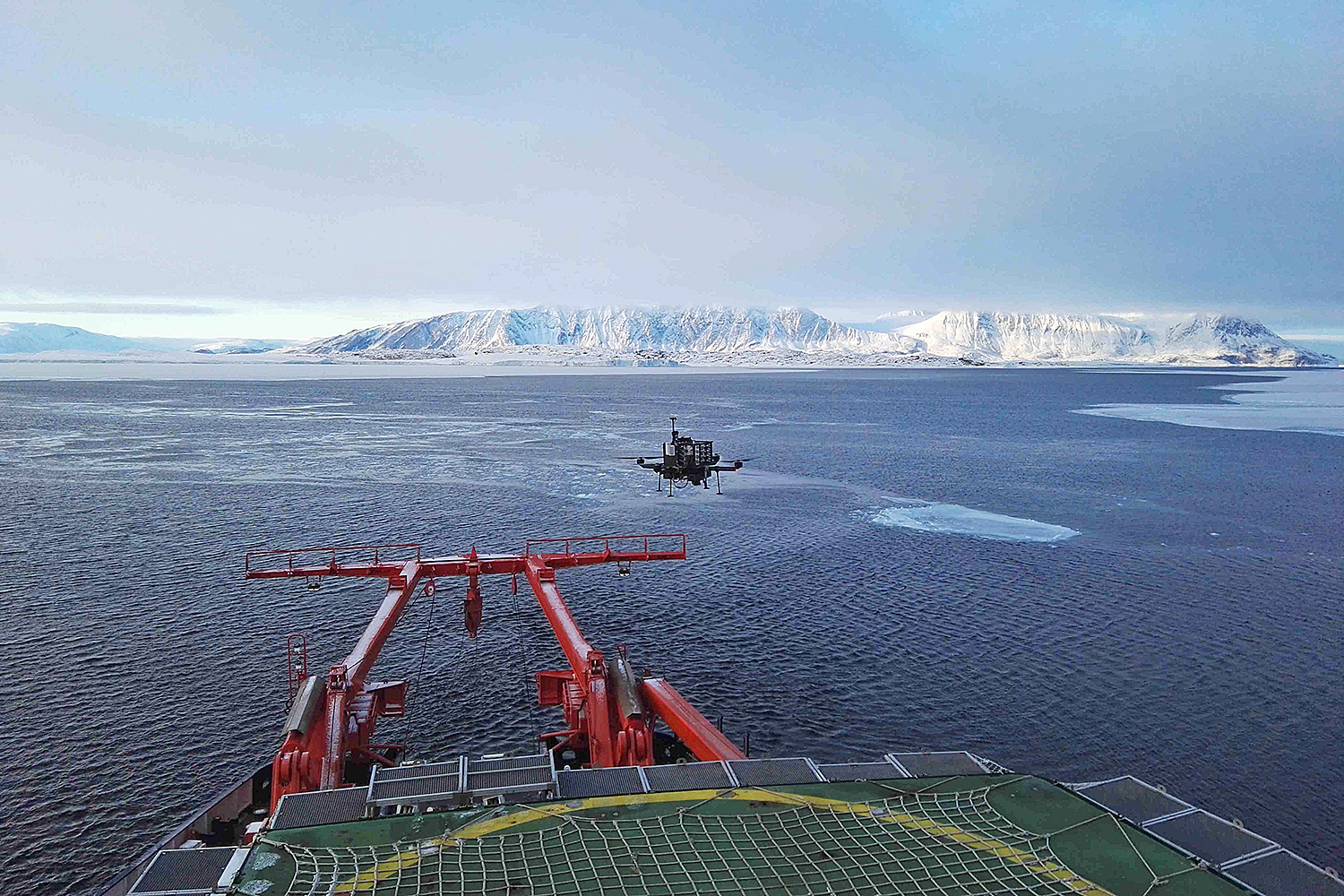Picture of the Month: ALiCE’s Adventure in the Arctic From the Institute of Flight Guidance
It is still properly packed in crates, underway on a ship from Bremerhaven, heading for the Arctic. Its destination is the icebreaker “Polarstern”, which is frozen in sea ice and drifting across the North Pole. The quadrocopter ALiCE of the Institute of Flight Guidance (IFF) at Technische Universität Braunschweig will be deployed on the MOSAiC expedition led by the Alfred Wegener Institute, Helmholtz Centre for Polar and Marine Research (AWI). Our picture of the month shows it during the Polarstern expedition 2017 east of Greenland.

The quadrocopter ALiCE during the Polarstern expedition 2017 east of Greenland. Picture credits: Axel Behrendt
Over the course of the five-week research expedition in September and October 2017, scientists Dr Falk Pätzold and Thomas Krüger from IFF, with support from ALiCE (Airborne tool for methane isotopic composition and polar meteorological experiments), investigated climate issues: how the atmosphere is affected by sea ice and what role sea ice plays in the introduction of methane into the atmosphere.
Once again – for MOSAiC, the largest Arctic expedition in history – the quadrocopter will take air samples during flights “on sight” at altitudes of up to 1,000 metres. This will enable the research team to use isotope analysis to determine the sources of methane in the Arctic.
IFF Measurement Technology
Pätzold, a specialist for meteorological measurement technology at the IFF, will fly to Tromsø in Norway at the end of January and from there set out for the icebreaker “Polarstern” to join the international research team on the Arctic expedition. Besides ALiCE, the helicopter towed probe “HELiPOD” of IFF is also on its way to “Polarstern” – equipped with 60 measuring instruments, some new, some tried and trusted. In addition to atmospheric measurements, the ice surface is documented, aerosols are measured and the influence of clouds is analysed. The data will allow scientists to investigate interactions between sea ice, atmosphere and ocean. Pätzold will also be on board the helicopter and make sure that the HELiPOD sensors operate smoothly.
According to AWI, hardly any other region has warmed up as significantly as the Arctic in recent decades. At the same time, however, year-round observations from the ice-covered Arctic Ocean are lacking. With the MOSAiC expedition this is now possible. The “Polarstern” and its international research team are spending a whole year in the Arctic, with the icebreaker drifting through the Arctic Ocean while it is frozen. This means that for the first time research can take place near the North Pole during the Arctic winter.
